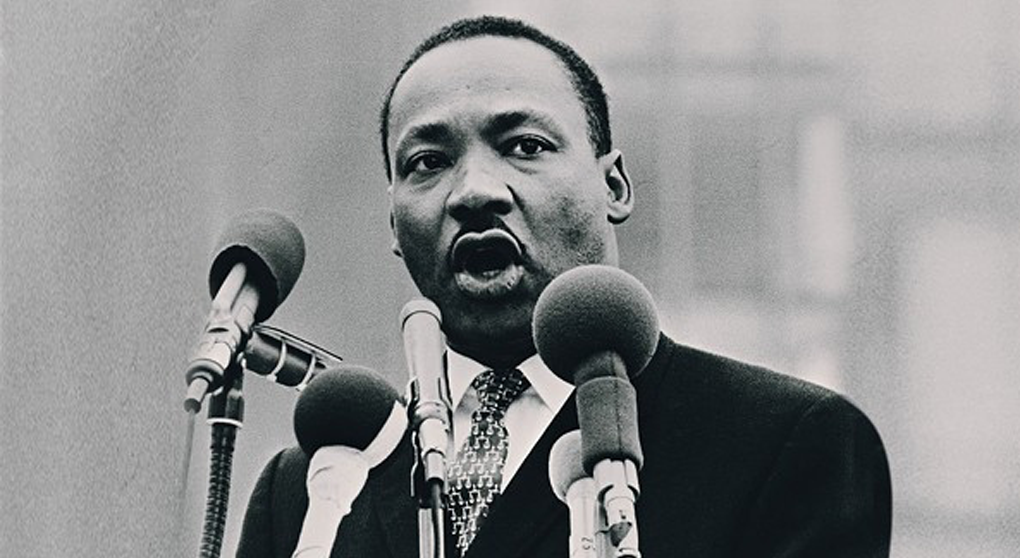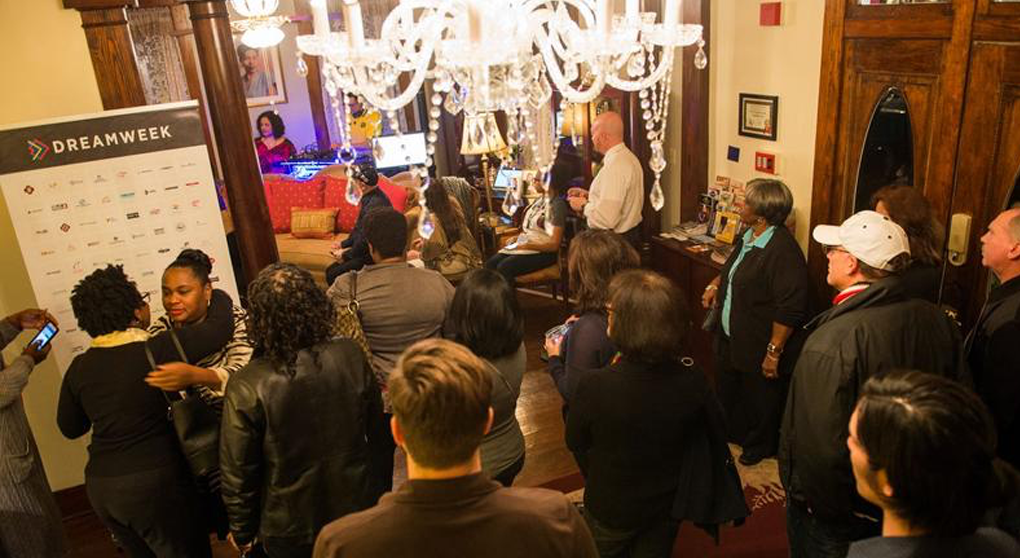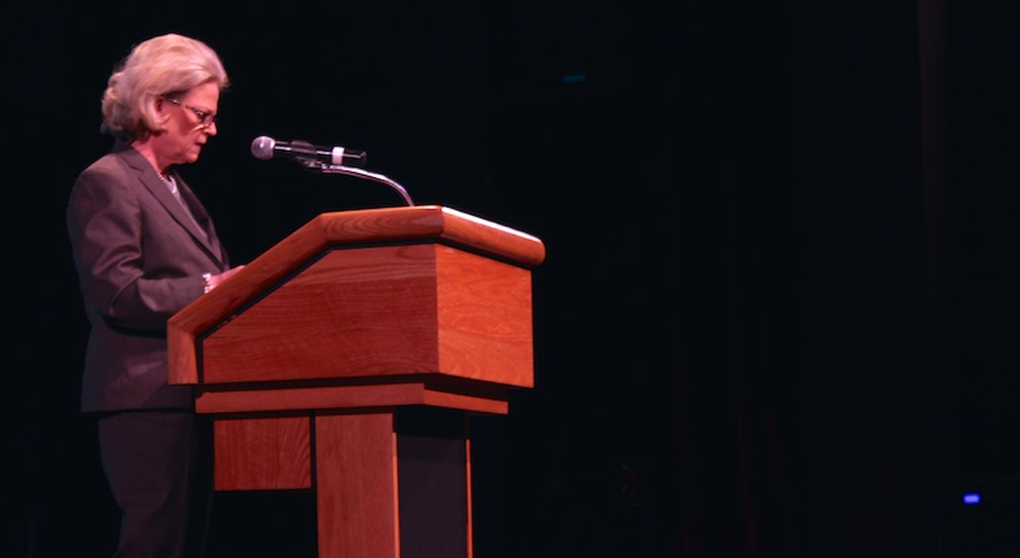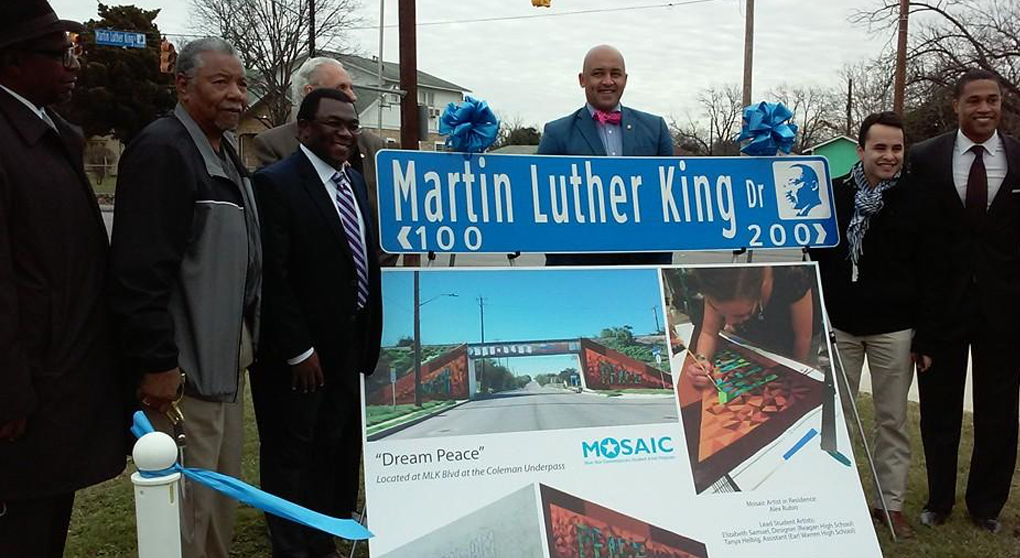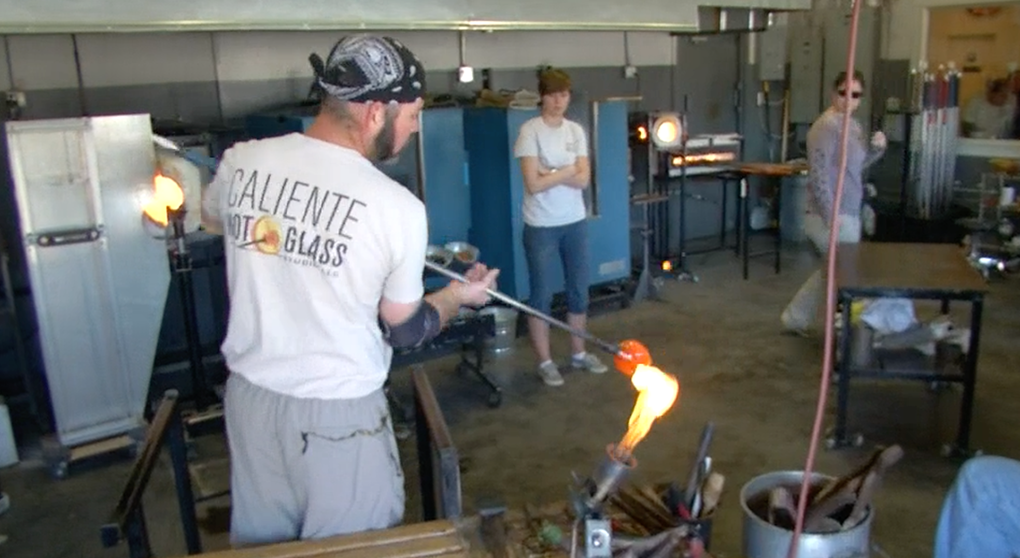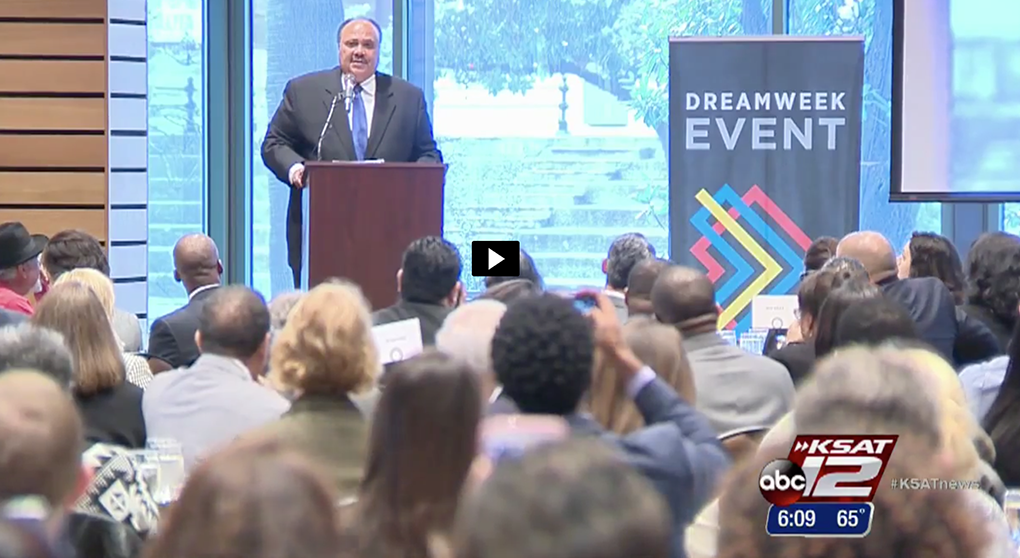
The Spire at Sunset Station, the historic church-turned-event-space in San Antonio’s near Eastside, was the perfect setting to hear personal stories told by more than 100 Eastsiders on Monday night.
In the building that was once home to St. Paul’s United Methodist Church, the oldest majority African-American congregation in the city, generations of San Antonians gathered together to exchange accounts of living and working in the city’s Eastside during the interactive event “Place Changing: Living Stories of the Eastside.”
The event featured a potluck dinner shared by community members who were encouraged to sit at tables with fellow attendees they haven’t met yet rather than clustering into familiar groups. There were residents, San Antonio police officers, middle school students, and local business owners of all ages and race. In the very room that used to offer safe haven to a community of African-Americans struggling with segregation decades ago, sat a diverse group of people with at least one thing in common: an appreciation for preserving and celebrating the Eastside.
The event was the latest edition of Place Changing, a project series by the Rivard Report and Overland Partners that aims to give insight to the public about how the city, its neighborhoods, and demographics are changing and to help community members facilitate that change in a balanced way. Place Changing’s first project, an in-depth exploration of the Dignowity Hill Historic District in the Eastside, was published last summer.
Visit placechanging.rivardreport.com to read more.
The main purpose of Monday’s event, part of the DreamWeek calendar of events, was to expand the conversation into the larger Eastside by creating a discussion about the diverse neighborhoods’ past, present, and future amid rising interest from developers, increased federal investment and changing demographics.
While historically predominantly African-American, recent studies show that more and more Latinos are calling the Eastside home.
In attendance were both long-time and newer Eastside residents, as well as curious San Antonians from other parts of town eager to learn more about the area. Seven featured storytellers were assembled to help facilitate the audience’s own storytelling, and included community stakeholders of varied backgrounds.
The speakers were Charles Williams, Eastside resident, business owner, and cultural historian; Rosemary Kowalski, founder of The RK Group; Linda Cherry, the youth director at Ella Austin Community Center; Dianne Green, principal consultant at Culture Transforms Community Enterprises; Juan Rocha, facilitator at Wheatley Community School; Dieter Cantu, executive director of the nonprofit Position of Power; and Hubert Lee Brown, community health worker and violence interruptor for the City’s Stand up SA program. Almost all have lived and worked on the city’s Eastside for most of their lives.
Wheatley Community School employee Juan Rocha gives his story. Photo by Scott Ball.
Wheatley Community School employee Juan Rocha shares his story. Photo by Scott Ball.
Charles Williams, an Eastside resident, businessman, and cultural historian, discussed how the Eastside has recently begun a transformation from a crime-ridden, low-income community to an area in which young couples and professionals can feel safe raising children. That transformation, for some, is yet to be realized. But during the 60s, Williams said, the near Eastside was a bustling center for residents, entertainment and business.
“From about 5 p.m. to 12 a.m., people used to walk the streets like New York City,” Williams said. “Sometimes I take a nostalgic drive down Commerce Street and I really have to use my imagination to see how it used to be.”
Today, much of Commerce Street is lined with buildings with boarded up windows. But some staple businesses have remained and the long-vacant Friedrich Building, which looms particularly large between Pine and Olive streets, has recently piqued the interest of multi-family housing developers.
Brown brought a different perspective of the Eastside into the conversation. For him, the Eastside was a step up from growing up on the Westside with a drug-addicted mother.
Outreach Supervisor for Stand Up S.A. Hubert Lee Brown gives his story. Photo by Scott Ball.
Outreach Supervisor for Stand Up SA Hubert Lee Brown shares his story. Photo by Scott Ball.
His family was poor but he said he didn’t know it because everyone around him was poor. Then he started to live with his father in the Eastside. It was then that he realized how bad his previous living situation really was.
“All I’d seen was negativity. Prostitution, drugs, and shootings,” Brown said.
After school, his time in Atlanta, and some time in jail Brown became a record label producer and then a rapper. But he found something lacking in the lifestyle and found himself the victim of a shooting and in and out of jail.
Brown is now the outreach supervisor for Stand Up SA, a violence prevention program funded through the Metropolitan Health District, but that doesn’t come close to describing what he does. His job is to work a team of volunteers and staff to prevent retaliation shootings. When someone is killed in what appears to be gang-related shooting, Stand Up SA is called in to talk to the victim’s and perpetrator’s family, friends, and associates to try to avoid further violence.
“I decided to give up on the street life and I wanted to give back,” Brown said.
Kowalksi, 91-year-old founder of The RK Group, expressed her enthusiasm for the way the neighborhood has changed in regards to race and class. The RK Group is one of those staple businesses on Commerce Street and brought several trays of food to Monday night’s gathering.
Founder of The RK Group Rosemary Kowalski gives her story as Robert Rivard assists her. Photo by Scott Ball.
Founder of The RK Group Rosemary Kowalski shares her story as Robert Rivard assists her with a microphone. Photo by Scott Ball.
“My life has been part of the Eastside for many years,” Kowalski said. “Back then we were all segregated, not just by color but by class. The new way is so much better for all of us. If people have respect for you, we can all be together.”
After hearing all seven stories, the audience was then encouraged to share their own Eastside stories with their respective table. “What is your favorite memory of the Eastside?” asked facilitators assigned to each table. “How have you noticed a change in the Eastside?” and “How do you think the Eastside will be in 10 years?”
While some tables contained Eastside dwellers of more than three decades, others included citizens who made their homes there just last year. Judith Grant, a local writer and Eastside resident as of September, said though she is newer to the neighborhood she has already noticed quite a bit of change.
“Just from having started renovations on my house in April, the change is phenomenal,” Grant said. “Everyone has to be careful about that because homes are turning into just money-makers and not homes to live in.”
Similar to the trials faced while overcoming racial differences years ago, the community now is having to pull together in order to avoid rapid gentrification in their area. Hearing the stories of fellow Eastsiders, she said, has inspired her to stand up for the community in the wake of new developments occurring in the area.
“I have more hope after listening to these stories and I feel like there is a real community. We need people to feel empowered, people shouldn’t feel powerless.”
It is that same spirit Grant holds that inspired so many of the community members present Monday night to reflect on the event in conjunction with DreamWeek.
Williams stressed the importance of remembering the past in order to make a better future.
“This week is about coming together as one, about embracing one another as sisters and brothers, and to tell the story of yesterday,” Williams said to applause.
The event is just one of more than 100 taking place during DreamWeek, leading up to the MLK March taking place on Monday, Jan. 18. Just as the Eastside community is joining together for their neighborhood, it is expected that the San Antonio community will join together for the march. Panelist and Youth Director Dr. Linda Cherry has faith that that will be the case.
“Where else can you go where the African-American community is only 8% yet that community produces one of the largest MLK marches in the nation?” Cherry said. “I couldn’t live in a finer city.”
*Top image: Ella Austin Community Center Youth Director Linda Cherry gives her story. Photo by Scott Ball.

